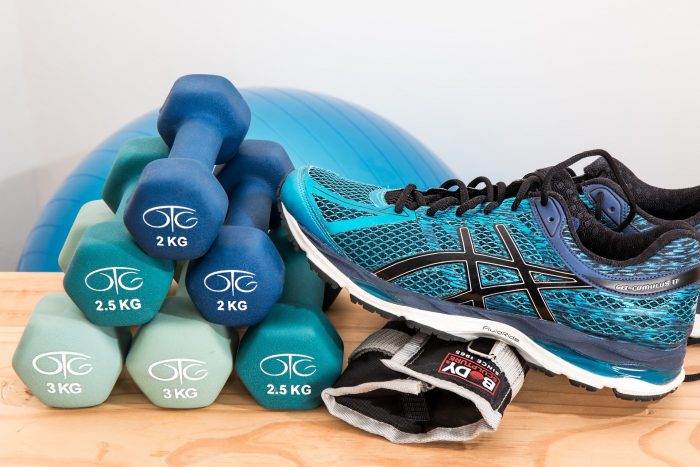How Exercise can Influence our Thought Processes and Stimulate Brain Growth
Posted by Phil Heler on June 20, 2021Human society has evolved at such an incredible rate that we have become almost completely released from having to do any physical activity at all. Latest research is now beginning to unravel much more about the influence of exercise and how it determines our physiology and even our mood and thought processes.
One of the things that has always interested me is evolutionary biology and I have periodically written articles based on some of the latest content. One evolutionary biologist that interests me very much is Daniel Lieberman. One of the interesting pieces of research that he has investigated is ‘why we hate exercise’?
This notion is quite a strange concept, but it is a very worthwhile question. Human society has evolved at such an incredible rate that we have become almost completely released from having to do any physical activity at all. The average British adult even has enough time to spend 3 hours 37 minutes on their smart phone each day according to one recent survey and this does not even include time spent on streaming services such as Netflix.
Given that we are doing far less than our forebears and we are fortunate enough to have time on our hands why don’t we have the instinct to compensate with some sort of physical activity? Surely this should be innate. After all our body shape and posture evolved because, as a species, we run and walk. So, if we have the hardware why do we not have the corresponding software and instinct to exercise?
Compared to other primates we have adapted anatomically in a host of ways to run and walk. The chief evolutionary adaptations occurred in our spines and pelvises. This was also facilitated by changes in the structure of our feet and leg length.
Unlike many primates, our arms are shorter and weaker when compared to our legs. Our feet were once designed to effectively grasp and manipulate objects, but they changed shape to allow us to walk. There are far more subtle changes as well. We are also particularly good at keeping our heads still while we run which is especially important for gaze stabilisation. This even influences our cranial anatomy.
The semi-circular canals in the human inner ear are much bigger than in other primates. We have these three fluids filled tubes (semi-circular canals) in our inner ear which essentially act as mini-spirit levels to help us with our balance. They are greatly enlarged compared to the great apes to allow for sudden accelerations of the head and neck anatomy as we change velocity when we move.
In terms of Evolution Exercise has Always Been a Given
Unfortunately for us there was no selective evolutionary pressure based on exercise. Not doing exercise was never an option for our ancestors as they always had to do it in order to survive. Preferential selection for exercise never occurred because it was a given. In fact, it probably works the opposite way round as in a hunter-gatherer community pointless exercise was assiduously avoided.
A relatively low energy calorific intake dictated how much we did. Going for a bike ride (unfortunately the wheel was not invented until 3500 years ago in Mesopotamia) or a session at the gym would have been entirely superfluous in ancient communities.
If we walk into a railway station, we are neurologically hardwired to choose the escalator rather than the stairs and enjoy energy dense foods (sugar and fat!) because we have deep rooted evolutionary instincts. There are however a few subtle incentives and adaptations that do promote exercise. Our endogenous endocannabinoid system gives us a sense of euphoria when we exercise.
In evolutionary terms this was always a good idea. As we were persistence hunters this euphoria would have made the experience of tracking a wild animal much more intense. We were therefore more alert and our experiences more vivid. Our sensory awareness and perceptions were heightened as we closed in on our prey. This also applies if we were being preyed upon! However latest research is now beginning to unravel much more about the influence of exercise and how it determines our physiology and even our mood and thought processes.
Walking & Running Stimulate Creative Thinking
It would appear that running or walking at an increased pace stimulates our creative thought processes by reducing activity in our prefrontal cortex. The prefrontal cortex is very much involved in rational straight-line thinking, focusing our attention, and managing emotional reactions and impulse control. Switch this off and the world runs riot. In 2014 one investigation looked at the effect walking had on creative thinking.
The study used a well-known test called the Guilford’s Alternate Uses (GAU) test on adult participants and compared the results for both sitting and walking. The GAU test is remarkably simple. It asks participants to think of as many uses as possible for a simple object, like a brick or a shoe or a paperclip and it is usually time constrained. This is called divergent thinking.
They also used what is known as a Compound Remote Associates (CRA) test for convergent thinking (this is when the prefrontal cortex is important). This test lists a group of words and requires that we provide a single extra word that will link all the others together (this process is more rational). Walking increased 81% of participants’ creativity on the GAU, but the walkers performed worse in the CRA tests. Want to be creative? Go for a walk!
Walking also Increases Cranial Blood Flow
Our physiology changes in other ways that are equally surprising when we exercise. It has always been assumed that blood flow to the brain was at a constant but new evidence suggests that this is not the case and in fact it is indeed variable and dynamic. Research suggests that the act of walking or running in particularly compresses arteries when our feet hit the ground. This action increases turbulence in the blood, providing up to a 15% increase in blood flow to the brain.
One such research article in 2018 from New Mexico Highlands University in Las Vegas demonstrated the effects that walking had on human carotid artery blood flow. Intriguingly, even the gentle pressure of footfall on a slow walk had a large influence on blood perfusion to the brain. They discovered that as people increased their walking speed to something like a fast-marching speed, and as people’s step rate synchronised with heart rate (i.e.,120 steps per minutes at 120bpm) this effect was optimised. So, what do we do with all this extra blood?
Exciting advances in neuroscience have recently discovered that exercise induces neurogenesis (or the growth of neurons) in the adult brain, with the potential to improve brain health and ward off the effects of neurodegenerative disease. Research has clearly demonstrated that exercise can significantly enhance brain structure and function, although why this occurs is unclear.
Evolutionary biologists are now suggesting that perhaps our physiological systems, including our brains, respond to activity-related stress by expanding their capacity. Unfortunately, there is also a suggestion that there may be a corresponding reduction in brain capacity as an energy-minimizing strategy if we are inactive. From an evolutionary perspective, physical activity stresses brain function and stimulates growth.
This evolutionary reflex may be something that was innate in our hunter-gatherer ancestors as they foraged and gathered food. We now know that exercise in general increases grey matter in the hippocampus, which is crucial for memory processing and spatial awareness. This would have been of great benefit to early man and would have helped reinforce behaviours necessary for survival.
The human species is very clever and adaptable but we must remember that now there are so few demands for us to undertake physical activity there is a cost to bodies and minds!


